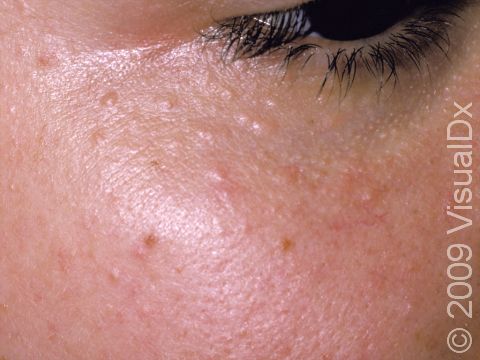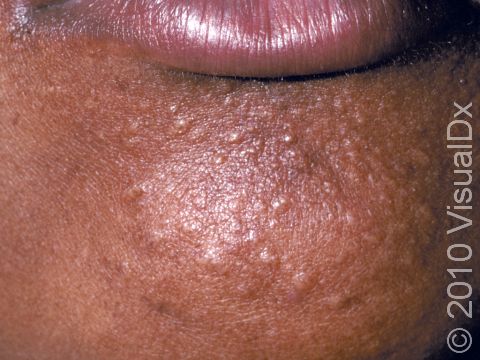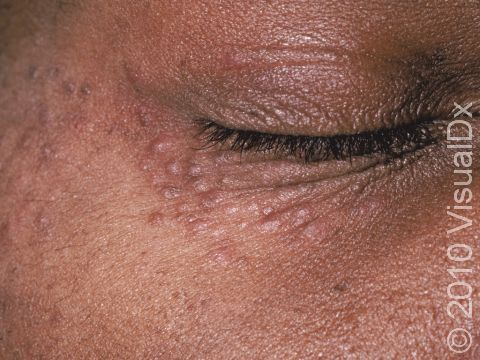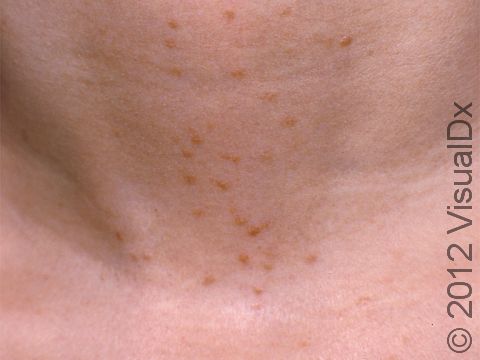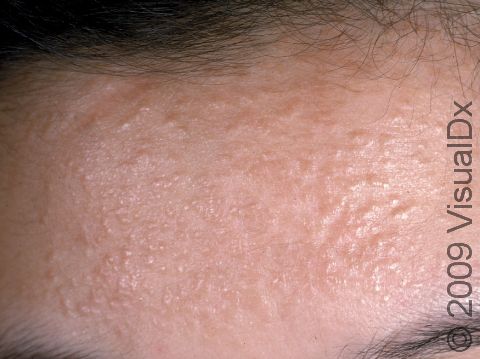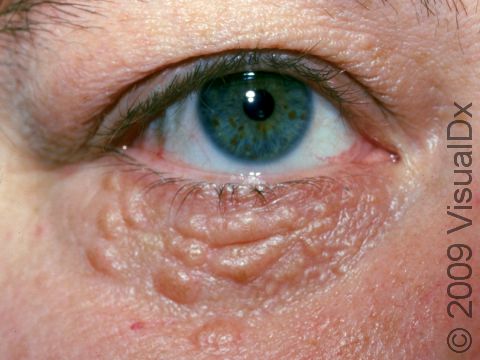Syringoma
Syringoma is a non-cancerous (benign) bump, usually found on the upper cheeks and lower eyelids of young adults. Syringomas are completely harmless and are caused by the overgrowth of cells from sweat glands (eccrine glands).
Who's At Risk?
Syringomas can appear at any age, though they usually occur after puberty. Syringomas can develop in people of any race and of either gender, though females are more commonly affected.
Syringomas sometimes run in families. Up to 18% of people with Down syndrome have syringomas. People with diabetes mellitus are more likely to have a type known as clear cell syringomas.
A less common condition, eruptive syringomas, is more commonly seen in people with darker skin.
Signs & Symptoms
The most common locations for syringomas include:
- Upper cheeks
- Lower eyelids
- Armpits
- Chest
- Abdomen
- Forehead
- Genitalia (penis or vulva)
Syringomas typically appear as small (1–3 mm) flesh-colored-to-yellowish bumps. They usually occur in clusters on both sides of the body and in an evenly distributed (symmetrical) fashion.
Eruptive syringomas appear as multiple lesions that all develop at the same time, usually on the chest and abdomen.
Syringomas do not itch or cause pain.
Self-Care Guidelines
Any new skin growth should be examined by your doctor in order to obtain a correct diagnosis.
Treatments
If the diagnosis of syringoma is suspected, the doctor may want to perform a skin biopsy.
The procedure involves:
- Numbing the skin with an injectable anesthetic.
- Sampling a small piece of skin by using a flexible razor blade, a scalpel, or a tiny cookie cutter (called a “punch biopsy”). If a punch biopsy is taken, a stitch (suture) or two may be placed and will need to be removed 6–14 days later.
- Having the skin sample examined under the microscope by a specially trained physician (dermatopathologist).
If syringoma is diagnosed, no treatment is necessary because it is a benign condition. However, many people find syringomas cosmetically disturbing and want to have them removed.
Though there is a risk of scarring, destruction of syringomas is fairly simple and may include:
- Burning (cauterization) with an electric needle
- Cutting out (excision) with a scalpel, scissors, or flexible razor blade
- Carbon dioxide laser treatment
- Procedure to rub out the lesion (dermabrasion)
- Freezing (cryosurgery) with liquid nitrogen
Visit Urgency
See a dermatologist or another physician if any new growth develops on your skin.
Trusted Links
References
Bolognia, Jean L., ed. Dermatology, pp.1745-1746. New York: Mosby, 2003.
Freedberg, Irwin M., ed. Fitzpatrick’s Dermatology in General Medicine. 6th ed. pp.1823. New York: McGraw-Hill, 2003.
Last modified on October 5th, 2022 at 8:03 pm

Not sure what to look for?
Try our new Rash and Skin Condition Finder
